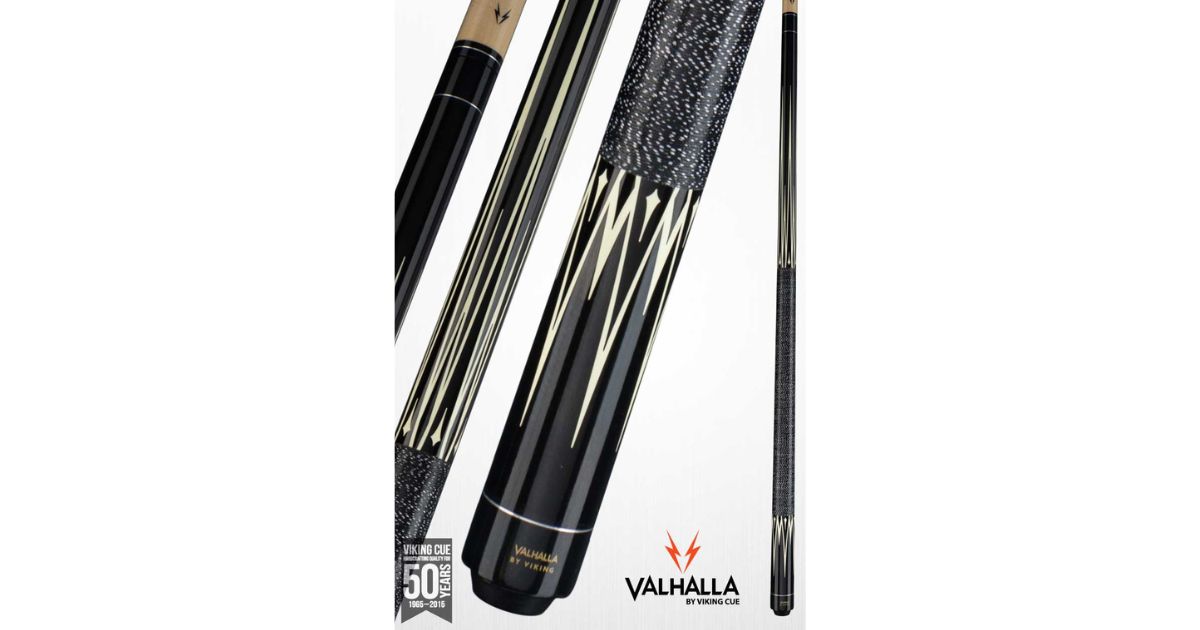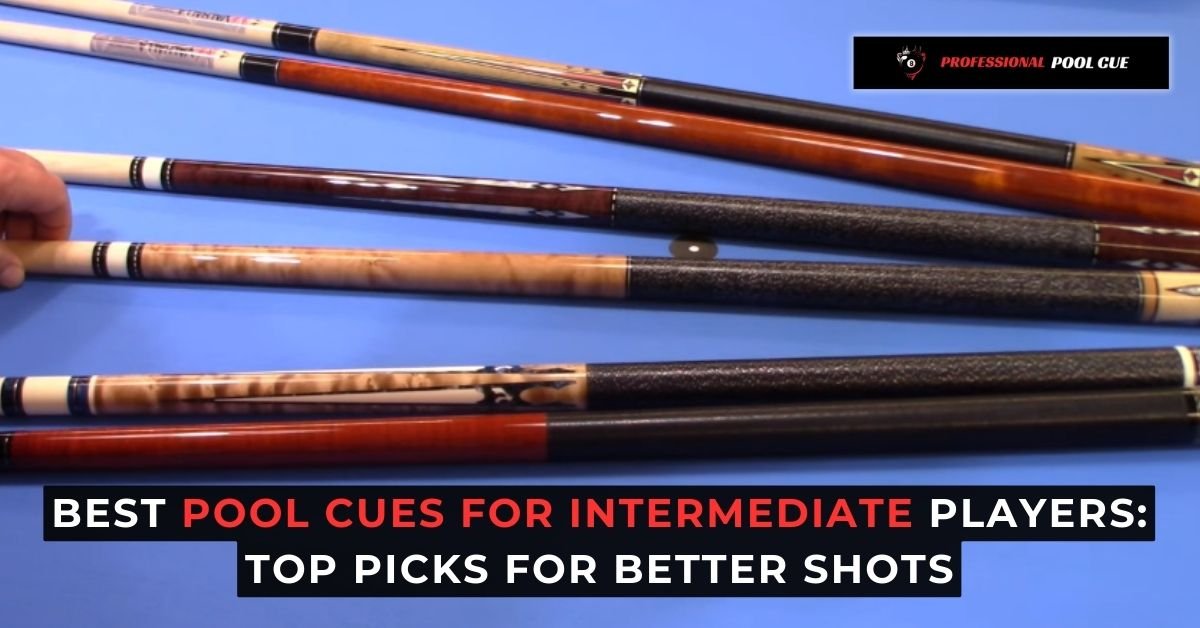Are you ready to elevate your pool game from casual play to a more competitive level? Choosing the right cue is not just a matter of preference; it's a fundamental step in unlocking your potential and achieving greater accuracy and consistency.
The world of pool cues can seem vast, especially when you're transitioning from beginner cues. There's a crucial distinction to be made: Moving beyond the basics requires a cue that complements your developing skills and aspirations. This article serves as your guide to navigating the choices, ensuring you invest in equipment that will propel your game forward.
We will delve into the realm of "intermediate pool cues," the tools of choice for those looking to refine their technique and elevate their performance. We'll explore the key features that define a high-quality intermediate cue, from the materials used in its construction to the technologies that enhance shot-making precision. Our focus is to provide you with the knowledge needed to make an informed decision, one that aligns with your individual style and goals.
Consider this your comprehensive resource for selecting the perfect cue to elevate your game, a starting point for a journey filled with more precise shots, greater control, and a deeper appreciation for the art of pool.
Here's a quick look at what we'll be covering:
- Essential Features: We'll discuss the critical components of an intermediate pool cue, including the shaft, tip, ferrule, and joint, and explain how each element influences your performance.
- Material Matters: From traditional exotic woods to modern carbon fiber, we'll explore the advantages and disadvantages of various materials and their impact on feel, balance, and performance.
- Top Picks & Recommendations: We'll provide a curated list of top-rated cues, each chosen for its quality, value, and suitability for intermediate players.
- Expert Advice: Throughout the article, we'll share insights and tips to help you make the right choice and maximize your investment.
Let's begin.
| Feature | Description |
|---|---|
| Materials | Premium materials such as exotic woods or carbon fiber. |
| Shaft Construction | Consider the type of wood (e.g., North American hard rock maple) and its impact on feel and deflection. |
| Tip | The tip is a crucial part. Material, shape, and hardness are factors that influence your game. |
| Joint | Joints with different pins and thread will affect how a cue feels and plays. |
| Technology | Features such as low-deflection shafts can significantly improve shot accuracy. |
Finding the best pool cue for your intermediate game is not just about finding the most expensive option; its about finding the cue that complements your unique style and elevates your potential. Whether you're drawn to the classic feel of exotic woods or the cutting-edge performance of carbon fiber, this article will provide you with the knowledge to make an informed decision.
Quality pool cues are a staple in any pool players arsenal, providing a tangible upgrade to a player's ability to perform at a higher level. Such cues will significantly improve your ability to make shots more accurately and consistently.
Our article will show you the top 9 best intermediate pool cues for players looking to upgrade their game.
We reviewed the best pool cues for intermediate players in the market, taking into account their materials, tip quality, and density in our reviews.
If one wants to excel in the sport or go further than casual playing, choosing the right cue is important to build up your game.
Before we dive into the specifics, lets address a fundamental question: Why would you need your own pool cue? While house cues found in bars and pool halls are adequate for casual play, they often lack the consistency and quality needed to develop your skills. A personal cue provides a level of control and familiarity that house cues simply cannot match. This translates into a more satisfying experience, allowing you to focus on refining your technique rather than compensating for equipment deficiencies.
Here is a list of some of the best pool cues for intermediate players.
Top 10 best pool cue for intermediate player reviews
Pure X pool cue stick
Cuesoul soocoo maple pool cue
These are pool cues that are a step above beginner cues.
10 best intermediate pool cues for players.
Below, weve listed 10 of the best pool cues for intermediate players that are both high quality and reasonably priced:
Lucasi custom mystic black and curly maple
Predator z 3rd gen shaft
So these are all that you are requested to check before choosing a pool cue for intermediate players.
Read more top 5 best pool cues:
A guide to best beginner pool cues.
Listen, there is a long list of the best pool cues for intermediate players.
And we think these five are the best among them.
Each cue is created with a simple core construction and comes paired with our exclusive predator one, low deflection technology shaft.
If youve tried using that before, itll give you a good indicator.
Still use it for bar action.
Also go for the 3/8th 10 pin.
Great feel, and if you ever want a different shaft, easier to find a shaft to fit that joint.
I think this was the best 225 i ever spent on pool equipment.
Bang for your buck but a little out of price range is mezz ec7 with a wx900 shaft.
Best production cue at that.
By now, youve seen a couple players cues on the list, and for good reason.
North American hard rock maple shaft
Noob, intermediate advance whatever it might be, just get a cue youre going to love a long time; each cue is different; its all up to your style.
I went from 20 dollar walmart stick to lucasi hybrid to cuetec cynergy.
And i wish i woulda just got the cynergy off the bat and learned it and love it right away
Best cues for beginner pool players.
Why would you need your own pool cue?
When shopping for an intermediate pool cue, several factors come into play. You'll want to consider the materials, the tip, the joint, and any additional features that can enhance your game. The choices can be overwhelming, but understanding the purpose of each component will guide you to the best fit.
The first thing to look at is the shaft. This is the front part of your cue and is responsible for transferring the energy from your stroke to the cue ball. There are several shaft materials to choose from, including:
| Material | Description |
|---|---|
| Maple | Is a popular choice for shafts due to its durability and feel. It provides a good balance between power and control. |
| Carbon Fiber | This is becoming an increasingly popular option due to its high performance. Carbon fiber shafts offer exceptional power transfer, reduced deflection, and increased durability. |
| Other Materials | Some cues use composite materials, such as fiberglass or layered wood, to provide a balance between performance and cost. |
The tip is the part of the cue that makes contact with the cue ball. The tip material and shape will impact your ability to apply spin and control the cue ball.
| Tip Material | Description |
|---|---|
| Leather | Leather tips are standard. They come in various hardness levels, which affect how they respond to your stroke. Softer tips provide more grip and spin, while harder tips offer more power. |
| Multi-layered | Multi-layered tips are made of several layers of leather, which offers improved consistency, feel, and performance. |
| Shape | The shape can be curved or flat, and this will affect how the tip strikes the cue ball. |
The ferrule is the piece that connects the tip to the shaft. It is usually made of phenolic resin or plastic, and it helps protect the shaft from damage.
| Ferrule | Description |
|---|---|
| Material | Ferrules made from a harder material are better for deflection and reduce the amount of energy lost during your stroke. |
| Size | The size of the ferrule can affect the feel and balance of the cue. |
The joint connects the shaft to the butt of the cue. A well-designed joint ensures the cue hits and has great feel.
| Joint Type | Description |
|---|---|
| Wood-to-wood | Provides a classic feel and is a common choice. |
| Metal-to-wood | Offers a stiffer hit and more power. |
| Pin Type | Common types include the 3/8 x 10, 5/16 x 14, and radial pins. Different pins have different impacts on how the cue feels. |
The butt of the cue is the back half of the cue, which provides the weight and balance of the cue. The materials used to make the butt can have a significant impact on the feel and performance of the cue.
| Butt Material | Description |
|---|---|
| Wood | Exotic woods are popular for their beauty and feel. |
| Wrap | Wraps can enhance grip and comfort. Common options include linen, leather, and Irish linen. |
When shopping, you can also consider the following features:
| Features | Description |
|---|---|
| Weight | Weight can range from 18 to 21 ounces. Balance is essential, so finding a cue that feels right for you is key. |
| Low Deflection | Cues with low deflection shafts reduce the cue ball's deflection on off-center hits, making it easier to aim and make shots. |
| Customization | Some cues offer customizable options, such as adjustable weight bolts and different joint types. |
Remember, the right cue is the one that feels best in your hands. Take your time, test different cues, and consider the factors we have discussed to make an informed choice.
Explore our top 9 picks, featuring premium materials, customizable options, and expert craftsmanship.
Shop now at fci billiards!



Detail Author:
- Name : Mr. Savion Wintheiser
- Email : leif.heidenreich@hotmail.com
- Birthdate : 1982-04-16
- Address : 43059 Sage Loaf East Margeberg, VA 40265
- Phone : +1.614.580.5615
- Company : Spencer, Quigley and Trantow
- Job : Civil Engineer
- Bio : Sit voluptas unde eos unde excepturi. Ut minima impedit repudiandae dolorem deleniti soluta sed. In et quae ad veniam est enim.